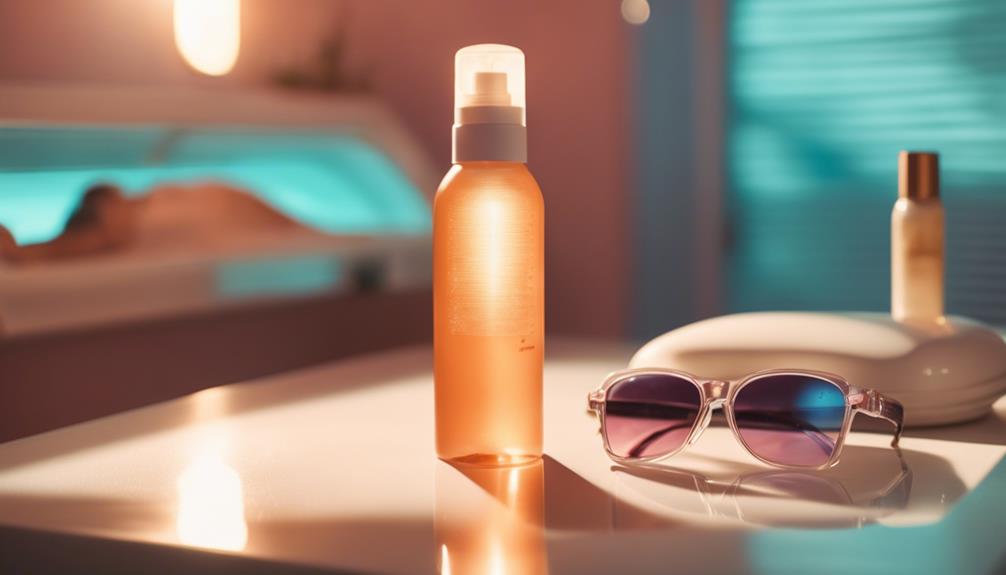To achieve a beach-ready body in four weeks, follow a structured HIIT plan that builds your foundation with basic moves, then gradually ramps up intensity and introduces new exercises. Focus on refining endurance and muscle definition through circuit training, while maintaining proper hydration and recovery. Push your limits and incorporate flexibility work to enhance results. Stick with this plan, and you’ll discover key tips and strategies to maximize your transformation along the way.
Key Takeaways
- Follow a progressive 4-week plan focusing on HIIT moves, core work, and muscle toning to achieve a beach-ready physique.
- Incorporate varied exercises like jump lunges, mountain climbers, and high knees to boost endurance and muscle definition.
- Increase workout intensity weekly with longer durations, reduced rest, and advanced routines for optimal results.
- Prioritize proper hydration, recovery, and flexibility training, including stretching and yoga, for safe progression.
- Track progress through body changes, tanning, and performance improvements, adjusting the plan as needed.
Week 1: Building a Foundation With Basic HIIT Moves

To kick off your 4-week beach-body HIIT plan, Week 1 focuses on building a solid foundation with basic HIIT moves. Prioritize core stability exercises like planks and bridges to strengthen your midsection, which supports all movements and improves balance. These exercises set the stage for more advanced routines later on. Remember, hydration strategies are key; drink water regularly before, during, and after workouts to stay energized and prevent fatigue. Proper hydration also helps your muscles recover faster and reduces the risk of cramps. Keep your effort consistent but manageable, focusing on proper form and controlled breathing. This initial week prepares your body for increased intensity, ensuring you build endurance safely while establishing healthy habits. Additionally, monitoring your tanning progress can motivate you to stay consistent with your fitness and skincare routines. Incorporating filtration efficiency in your environment can also enhance your recovery by maintaining cleaner air during your active recovery days. Using an air purifier with high filtration efficiency can help reduce airborne pollutants, supporting better respiratory health and overall well-being.
Week 2: Increasing Intensity and Introducing New Exercises

As you move into Week 2, it’s time to ramp up the intensity and add new exercises to challenge your muscles. Focus on interval progression by increasing work periods or reducing rest times, pushing your stamina further. Incorporate exercise variation to keep your workouts engaging and target different muscle groups. Swap in exercises like jump lunges or mountain climbers to diversify your routine. This variety prevents plateaus and boosts overall strength. Additionally, adjusting your training setup can optimize your training setup for better results. As you build on Week 1, aim to elevate your effort while maintaining proper form. Pushing your limits gradually ensures consistent progress without risking injury. Remember, adapting your intervals and trying new moves keeps your HIIT plan effective and exciting as you work toward your beach-body goals. Incorporating progressive overload principles can help ensure continuous improvement. Exploring Kia Tuning options can also motivate you by seeing tangible performance gains in your workouts.
Week 3: Enhancing Endurance and Defining Muscles

Building on the foundation from previous weeks, Week 3 focuses on boosting your endurance and sculpting muscle definition. You’ll incorporate exercises that improve stamina boosting and emphasize muscle toning, helping you see more toned results. You can also explore celebrity transformations for motivation and new workout ideas. By increasing workout intensity and duration, you challenge your body further, enhancing overall performance. Additionally, understanding the significance of contrast ratio can help you appreciate how visual clarity and detail are affected in different settings. Here’s a quick overview:
| Focus Area | Key Exercises |
|---|---|
| Stamina Boosting | Jump rope, high knees, burpees |
| Muscle Toning | Squats, lunges, push-ups |
| Endurance Building | Circuit training, interval runs |
| Recovery Tips | Stretching, hydration, rest |
Additionally, incorporating targeted recovery methods like eye patches can aid in overall relaxation and skin rejuvenation, complementing your fitness routine. Understanding how performance upgrades can enhance your progress can help you tailor your training effectively. Stick with this plan to develop lean muscles and elevate your stamina, making your beach-body goals achievable.
Week 4: Pushing Limits and Preparing for Beach Day

By Week 4, you’re ready to push your limits and sharpen your readiness for beach day. Focus on enhancing your core strength, which boosts stability and overall appearance. Incorporate advanced HIIT routines that challenge your balance and endurance. Flexibility training becomes essential now, helping prevent injuries and improving movement fluidity. Dedicate time to dynamic stretches and yoga poses that stretch tight muscles and increase range of motion. Push yourself with higher-intensity intervals, aiming to maximize calorie burn and muscle definition. Incorporating proper recovery techniques can further enhance your results and prevent burnout. Developing mind-muscle connection can improve exercise effectiveness and engagement. Combining core exercises with flexibility drills prepares your body for the demands of beach activities. This final week is about refinement—fine-tuning your strength, flexibility, and confidence so you shine on beach day. Staying consistent and maintaining a balanced diet can optimize your results. Remember that consistent scheduling of workouts ensures steady progress and helps establish healthy habits. Stay committed, listen to your body, and enjoy your transformation.
Frequently Asked Questions
Can I Substitute Exercises if I Have Injuries or Limitations?
You can absolutely adapt exercises if you have injuries or limitations. When you prioritize injury-safe alternatives and incorporate adaptive modifications, you guarantee your workout remains effective and safe. Listening to your body, modifying movements, and choosing suitable alternatives help you stay on track without aggravating your condition. Remember, flexibility in your routine fosters progress, resilience, and long-term success—because your workout should serve your body, not strain it.
How Should I Modify the Plan for Beginners or Seniors?
When modifying exercises for beginners or seniors, you should focus on beginner modifications that ease intensity and impact. Use modification techniques like reducing the range of motion, performing lower-impact movements, or doing exercises seated or supported. This helps prevent injury and builds confidence. Always listen to your body, and don’t hesitate to adjust or skip exercises that cause discomfort. Gradually increase difficulty as strength and endurance improve.
What Should I Eat to Maximize HIIT Results?
Your nutrition can make or break your HIIT results—it’s like fuel for a rocket! Focus on balanced meals rich in lean proteins, whole grains, and healthy fats. Nutrition tips include timing your meals to avoid workouts on a full stomach and eating a small carbohydrate and protein snack beforehand. Proper meal timing boosts energy and recovery, helping you maximize every sweat-soaked second of your HIIT sessions.
How Much Rest Is Recommended Between HIIT Sessions?
For ideal results, you should pay attention to rest intervals and session frequency. Typically, it’s recommended to rest for about 24 to 48 hours between HIIT sessions to allow your muscles to recover and prevent overtraining. This means you might do 2 to 3 sessions per week, depending on your fitness level. Listening to your body is key—if you’re overly sore or fatigued, give yourself extra rest.
Is This Plan Suitable for Weight Loss or Muscle Gain?
Think of your body as a busy engine—this plan fuels both calorie burning and muscle toning. If you want weight loss, HIIT boosts your metabolism and burns calories quickly. For muscle gain, it’s great for muscle toning, but you’ll need additional strength training. So, yes, this plan suits both goals, but tailor your workouts and diet accordingly to get the best results for either weight loss or muscle gain.
Conclusion
Stick with this 4-week plan, and you’ll see real progress. It’s easy to think you won’t notice results so quickly, but consistency is key. Even on busy days, a quick workout keeps you moving forward. Remember, this isn’t just about looking good — it’s about feeling stronger and more confident for your beach day. Keep pushing, stay committed, and you’ll surprise yourself with what you can achieve.










